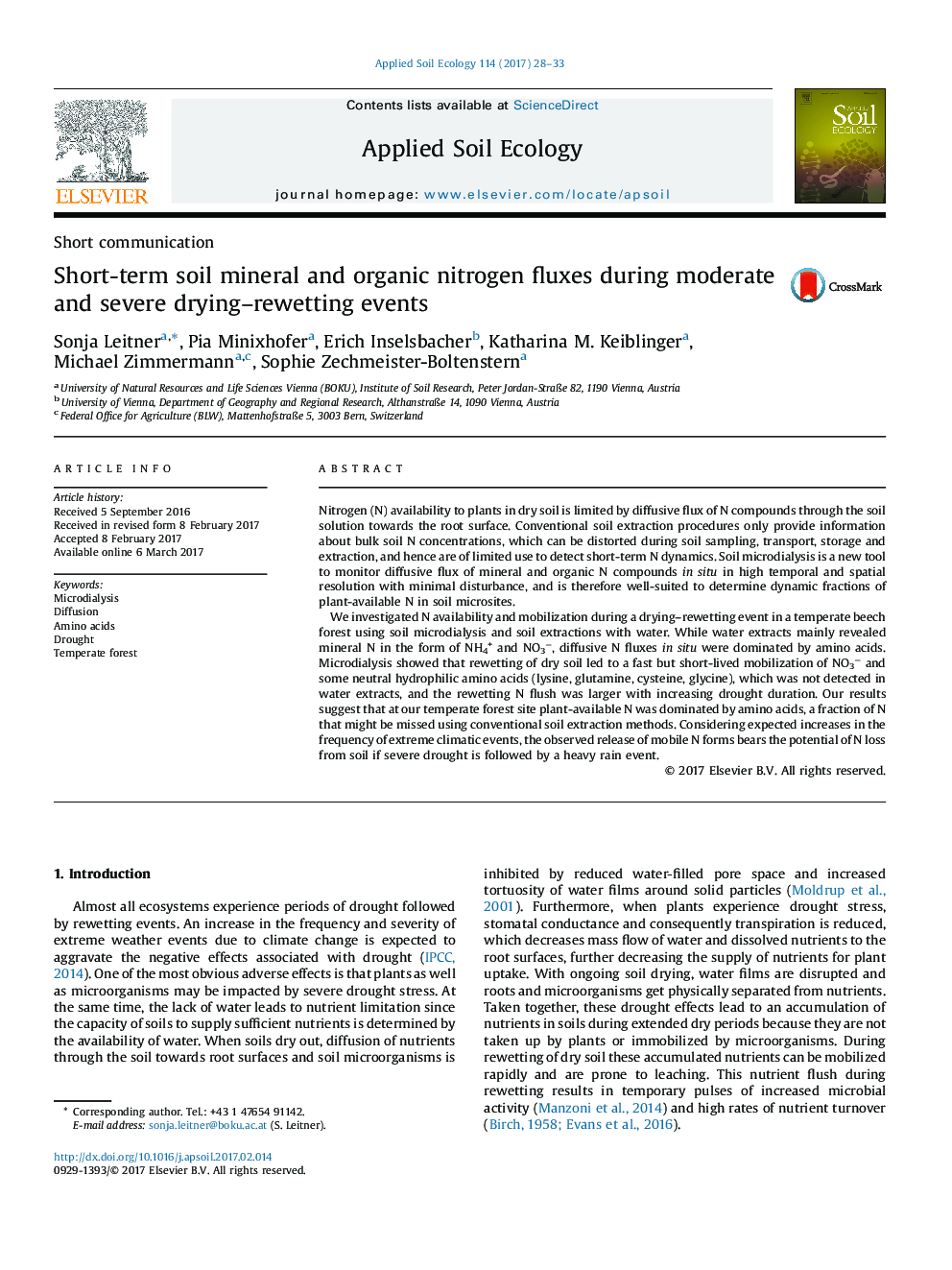| Article ID | Journal | Published Year | Pages | File Type |
|---|---|---|---|---|
| 5742706 | Applied Soil Ecology | 2017 | 6 Pages |
â¢Soil microdialysis is able to reveal short-term dynamics of soil nitrogen fluxes during rewetting.â¢Rewetting leads to an immediate flush of nitrate and neutral hydrophilic amino acids.â¢The rewetting nitrogen flush is larger when the preceding drought was longer.â¢Microdialysis reveals high availability of amino acids in temperate forest soil.
Nitrogen (N) availability to plants in dry soil is limited by diffusive flux of N compounds through the soil solution towards the root surface. Conventional soil extraction procedures only provide information about bulk soil N concentrations, which can be distorted during soil sampling, transport, storage and extraction, and hence are of limited use to detect short-term N dynamics. Soil microdialysis is a new tool to monitor diffusive flux of mineral and organic N compounds in situ in high temporal and spatial resolution with minimal disturbance, and is therefore well-suited to determine dynamic fractions of plant-available N in soil microsites.We investigated N availability and mobilization during a drying-rewetting event in a temperate beech forest using soil microdialysis and soil extractions with water. While water extracts mainly revealed mineral N in the form of NH4+ and NO3â, diffusive N fluxes in situ were dominated by amino acids. Microdialysis showed that rewetting of dry soil led to a fast but short-lived mobilization of NO3â and some neutral hydrophilic amino acids (lysine, glutamine, cysteine, glycine), which was not detected in water extracts, and the rewetting N flush was larger with increasing drought duration. Our results suggest that at our temperate forest site plant-available N was dominated by amino acids, a fraction of N that might be missed using conventional soil extraction methods. Considering expected increases in the frequency of extreme climatic events, the observed release of mobile N forms bears the potential of N loss from soil if severe drought is followed by a heavy rain event.
